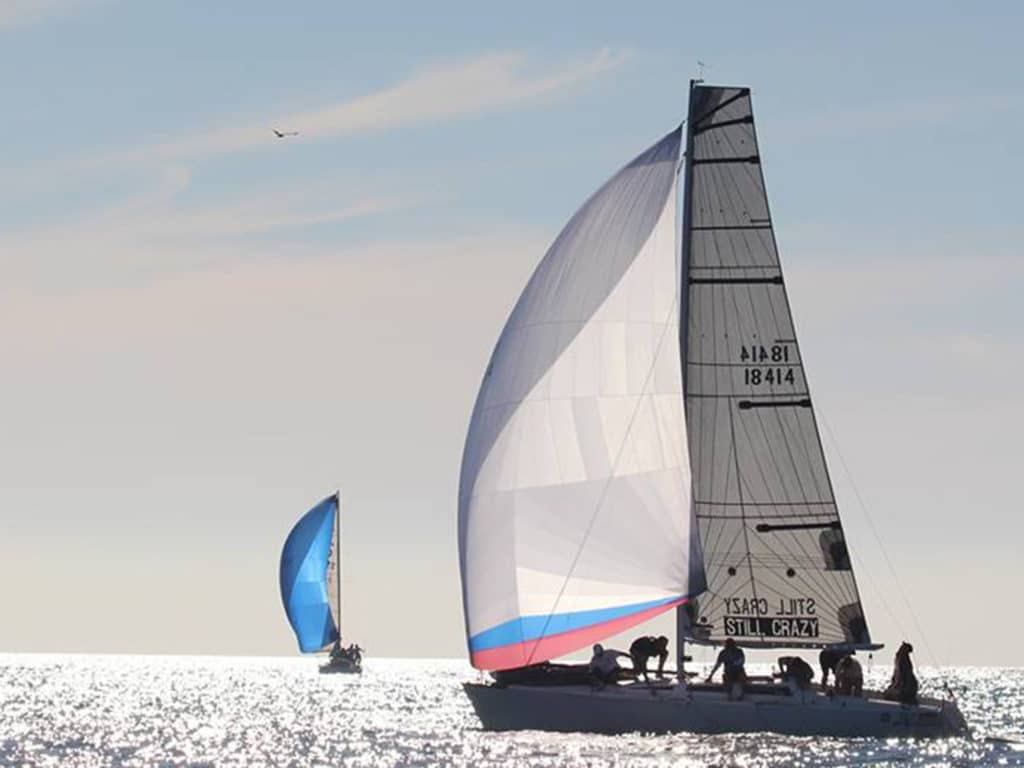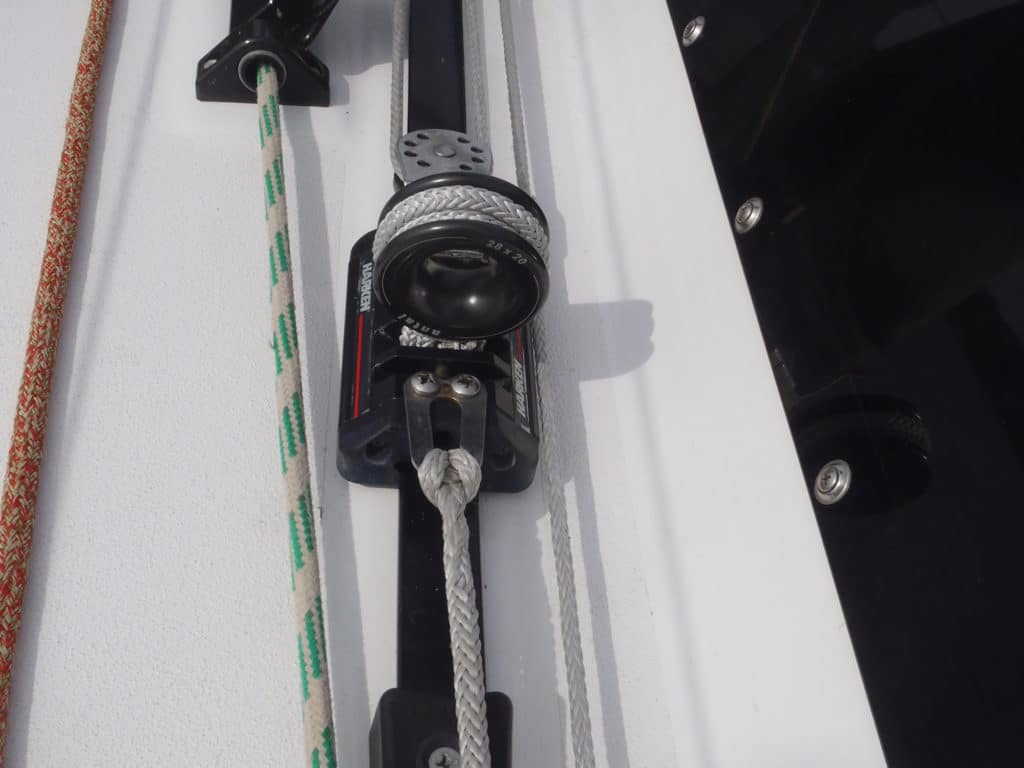
There’s no one magic bullet when it comes to success in PHRF racing—or any time of racing for that matter—but there are a few easy ways to ensure your boat is up to snuff and race ready for when the season finally gets underway. Here’s what’s at the top of my list, and while they may seem obvious, they’re guaranteed to make a difference.
1. Weight is slow
As is with any boat, making sure your boat is as light as possible is key. Most PHRF areas mandate what can come off versus what has to stay on. For example PHRF Southern California allows you to take V-Berth cushions out but requires you to keep factory mid ship and aft cabin cushions in. Make sure the boat is on a constant diet to remove old gear, clothing, and even food and drink that can accumulate on board our boats throughout the season.
2. Optimize lines
Unlike many one-design classes, there are no line type or size restrictions in PHRF. This is a great place to examine every piece of line on you boat and make sure it is the right choice for the specific application. One easy upgrade is with your backstay or runners. New line on the market is lighter, stronger, and has less stretch which helps keep your forestay tight when going upwind. It’s the same for Jib or Genoa halyards. Keep your headsails luff tight with a good high-end line.
3. Hardware—weight and strength rule
Also, without the restrictions of one-design rules, you’re free to use whatever hardware you want, so you might as well be weight and strength conscious and get the best parts you can when you go to replace old blocks and hardware. In multiple boats we have actually modified existing hardware to cut weight. Low friction rings can be a great way to cut weight as well.

4. Optimize sails
PHRF generally outlines how sails are measured, and working with your sailmaker to get sizes that fit your boat perfectly is very important. An example is with asymmetric spinnakers. The rules on luff lengths can vary. Having a max-length luff can be very slow at times. Another is the asymmetric vs symmetric spinnaker question. Some areas allow you to carry both with no rating penalty. If so, at least one AP asymmetric is key for reaching legs. In some cases, the asymmetric can be actually have more square feet than the symmetric. In the case of lighter boats that generally sail higher apparent wind angles, changing over to only asymmetrical could be a consideration. Some areas mainsail and jib roaches are measured differently, so be sure to check and make sure you are getting the most sail area you can.
5. A fast bottom: let it be thin
In PHRF you can sand or fair your boat bottoms. Most PHRF boats live in the water so make sure you have a slippery smooth bottom is a top priority. I always hear about people excited to be getting a new bottom paint job just before the annual championship or right before a long offshore race. This is the wrong time for that. While a fresh coat of anti-fouling paint keeps growth at bay, it adds weight and can be bumpy until it is properly cleaned a few times or sanded. Your best bet is to get a new paint job at the beginning of the season and slowly wear it down so it is thin, light, and smooth by the time the season championship comes around. The same goes for an offshore event like the Transpac. Let the paint get sanded down so it is as light and smooth as possible before the event and wait until you return to get a new bottom job.
6. Configuration changes: risk vs. reward
PHRF allows to you to modify parts of your boat and then will rate you accordingly. Often people will modify their boat only to be angered when their local PHRF board penalizes them. Most, if not all, PHRF areas will accept a letter of intent from an owner and make their best guess at what the rating change will be. For example, I would write to my local PHRF board and indicate my current configuration and then explain that I would like to add a square top mainsail and give them the proposed sizes and sail area changes. I would ask them what my rating penalty would likely be. I would then get a letter back saying what the rating change would likely be (+/-3 seconds, of course). Armed with that data, I could decide whether I was willing to take that risk. Because I made the decision beforehand about whether I wanted to take the risk, I would never complain about the rating that I received for my modification. For the boats with bigger budgets, you can employ a yacht designer to help answer some of these questions in a more scientific fashion.









